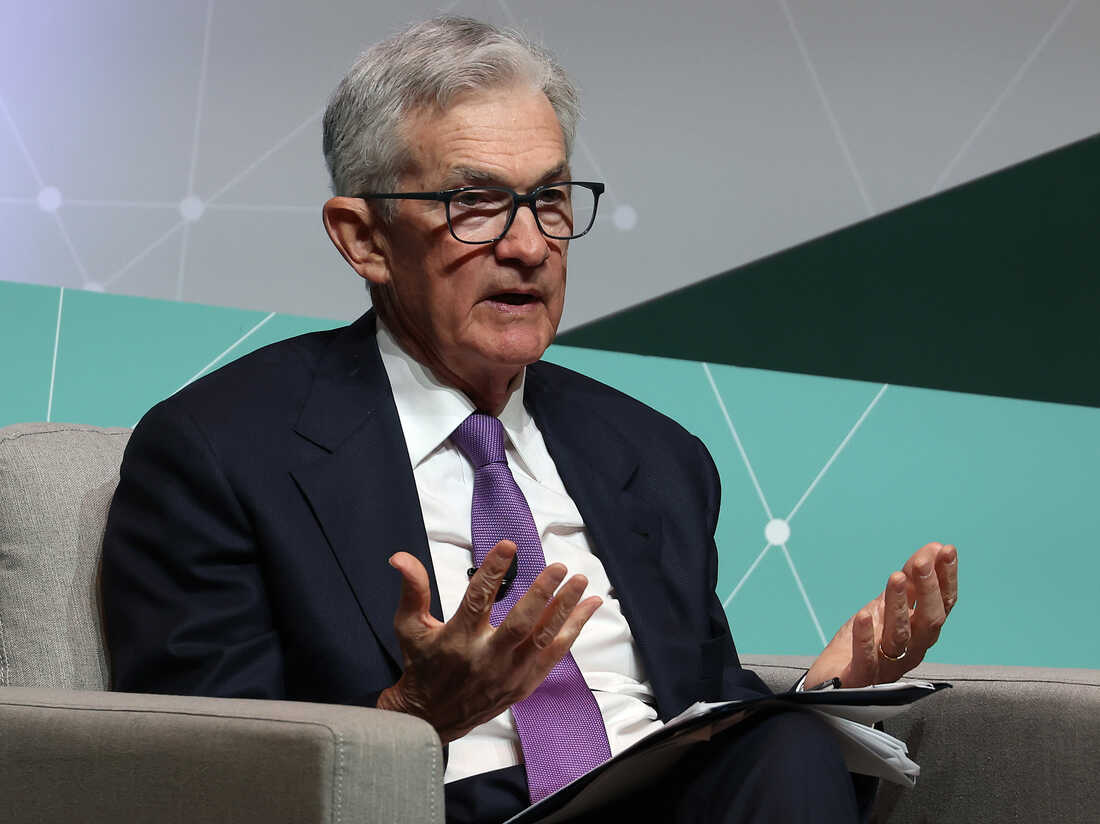Economy
Fed keeps interest rates at 23-year high
Federal Reserve chairman Jerome Powell and his colleagues voted to hold interest rates steady at a 23-year high on Wednesday. The central bank is trying to curb stubborn inflation.
Justin Sullivan/Getty Images
hide caption
toggle caption
Justin Sullivan/Getty Images
Federal Reserve chairman Jerome Powell and his colleagues voted to hold interest rates steady at a 23-year high on Wednesday. The central bank is trying to curb stubborn inflation.
Justin Sullivan/Getty Images
The Federal Reserve voted to keep interest rates at a 23-year high on Wednesday, as the central bank tries to curb stubborn inflation. Investors now think it could be September at the earliest before borrowing costs start to come down.
“Inflation has eased over the past year but remains elevated,” the Fed’s rate-setting committee said in a statement. “In recent months, there has been a lack of further progress toward the Committee’s 2% inflation objective.”
Consumer prices in March were 2.7% higher than a year ago, according to the Commerce Department’s inflation yardstick, which is closely watched by the Fed.
The central bank has kept its benchmark interest rate between 5.25 and 5.5% since July of last year. As recently as March, Fed policymakers thought they would be able to cut that rate by an average of .75 percentage points this year. Hopes for lower rates have dimmed, however, as progress on inflation appears to have stalled.
While the prices of many goods such as cars and furniture have fallen, the prices of services such as restaurant meals and car repair continue to climb. Higher interest rates may have less effect on demand for services, making it harder for the Fed to bring prices under control.
“You typically take out a loan for when you make a big goods purchase, like a car, certainly a house,” says Ernie Tedeschi, director of economics at the Yale Budget Lab. “Services spending is generally less interest rate-sensitive.”
A report from the Commerce Department last week showed that consumer spending is increasingly tilted towards services.
What’s more, tens of millions of Americans are largely insulated from the Fed’s rate hikes, because they locked in low, fixed-rate mortgages and don’t carry a lot of credit card debt.
“That’s one of the reasons why the consumer remains fairly willing to go out to restaurants and got to the mall,” says Oren Klachkin, financial market economist at Nationwide. “They’re not feeling that pain of the high-rate environment. Of course, that means that inflation is not going to come down as fast. But that’s kind of the tradeoff that we’re in right now.”
